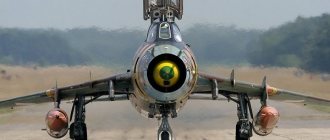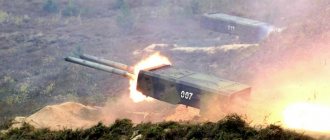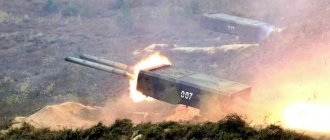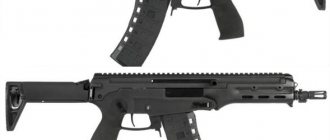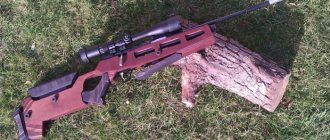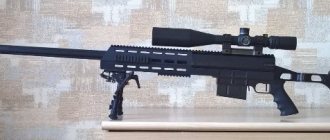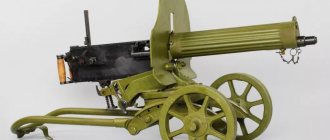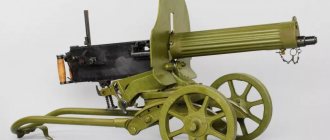On September 30, the Federation Council approved the use of the Armed Forces of the Russian Federation outside the Russian Federation. We are talking about the use of the Russian Military Space Forces (formerly the Air Force) to support the government forces of the Syrian Arab Republic in the fight against the terrorist group “Islamic State” (ISIS, the organization’s activities are prohibited in Russia) banned in Russia.
We will not speculate around the varying reliability of versions that Russian troops ended up in Syria much earlier than the adoption of this resolution, that the fight is actually not against IS terrorists, but against opposition troops opposing the regime of Bashar al-Assad; Let’s not conduct chilling investigations into the deaths of civilians as a result of Russian air strikes. Disgusting men talk about what and how the Military Space Forces of the Russian Federation are destroying the enemy in 2015.
Salt
- Anti-government protests in Syria directed against the regime of President Bashar al-Assad began in March 2011, becoming a logical continuation of a series of revolutions that swept the Middle East (the so-called “Arab Spring”).
- Very quickly, the acute situation in Syria escalated into a full-scale civil war with the participation of various groups: on the one hand, government troops led by Assad, on the other, the Free Syrian Army (FSA), consisting of dozens of different organizations.
- Al-Qaeda and many of its local affiliates joined the conflict. As a result, the country's territory plunged into anarchy and chaos. On fertile soil, various terrorist groups began to grow like mushrooms, including those with the participation of a huge number of foreigners.
- In 2013, the headquarters of the infernal Islamic State appeared in northern Syria. The further, the more rapidly the situation in Syria turned into a local apocalypse.
- In June 2014, the Syrian army controlled 12 of the country’s 14 provinces (70% of its territory), but in the spring of 2015 defeat after defeat followed, as a result of which the opposition and militants captured almost half of the country, including the large northern cities of Idlib and Jisr al-ash -Shugur. In the south of the country, the Syrian army also failed to achieve success - the province of Deraa remains under the control of extremists.
- The armed opposition is supported financially and materially by the United States, France, Great Britain, Turkey and Saudi Arabia, which are also engaged in the fight against the Islamic State.
- The Bashar al-Assad regime enjoys support (mainly political) from Russia, China, Brazil, India, Iran and a number of Latin American countries.
- The number of victims of the conflict since 2011 has amounted to 210 thousand people, more than 840 thousand were injured.
- The number of Syrian refugees worldwide has exceeded 4 million. 12 million people in the country need humanitarian assistance.
Technique
At the Khmeimim airfield near Syrian Latakia, a mixed group of the Russian Aerospace Forces has been formed, its composition (according to unconfirmed data) includes 12 Su-24M2 front-line bombers and six Su-34s, 12 Su-25SM attack aircraft, four Su-30SM multirole fighters, and also Mi-24 attack helicopters and Mi-8 multi-purpose helicopters. Using the example of this grouping of forces, we can see a good picture of the current situation of Russian military aviation - it consists of both morally and physically outdated machines, and new aircraft that show great promise, but do not have combat experience in use.
Su-25 and Su-24 are old Soviet aircraft, many times modernized and converted, but have been in operation for decades. They have gained extensive experience in combat use (including in Chechnya and Georgia), pilots and technicians know them inside and out. But “old and tried and tested” does not mean reliable; The Su-24 is considered one of the most dangerous aircraft in the Air Force.
The modern heavy multi-role fighter Su-30SM, a redesigned version of the Su-30, has crossed the “4+” generation level. It is re-equipped with modern navigation and radar equipment, can carry an increased load of high-precision weapons and is rightfully considered one of the best modern fighters.
The newest front-line bombers Su-34 replaced the Su-24. These are multifunctional vehicles, equipped with everything necessary for high-precision missile and bomb strikes, but they have not yet participated in combat operations. Participation in the Syrian conflict is a unique opportunity to test them in real conditions.
Thus, only ten out of thirty Russian aircraft in Syria are equipment of the 21st century, but such a ratio of old and new aircraft is a normal phenomenon for modern armies. In the US Air Force it's much the same; in neighboring countries of the region it is much worse.
Su-25SM "Rook"
An old Soviet armored subsonic attack aircraft, nicknamed the "Comb" for the characteristic shape of the underwing pylons for hanging ammunition.
Designed for direct support of troops in the front line day and night in all weather conditions. It first took to the air in 1975, has been actively used since 1981 and managed to take part in all conflicts during this period: the war in Afghanistan, both Chechen wars, the conflict in South Ossetia, as well as abroad (Iran-Iraq War, Persian War Gulf, Second Congo War).
The Su-25SM used in Syria is a modified version of the old Su-25 with updated avionics and HUD (heads-up display) and MFD (multi-function display) instruments.
Where were cluster shells used?
Prohibitions and the inhumane method of destruction of cluster bombs are actively used in the information war. Agencies actively accuse opponents of using such weapons in hot spots around the world and in recent military conflicts.
Thus, Russian media indicated that the Ukrainian military was using cluster bombs in eastern Ukraine.
Arab media indicate the use of Russian cluster shells in Syria. Many human rights organizations also testify to the use of such projectiles by the Syrian government against rebels and civilians.
All such accusations are denied; there is no official evidence of the use of these weapons in recent conflicts. Confirmed documents are available only for past wars.
In the comments, you can discuss known cases of the use of cluster bombs and the justification of such actions.
Su-24M2 "Suitcase"
An old Soviet two-seat front-line bomber with a variable-sweep wing. Depending on the flight mode, the front parts of the wing (console) are installed in one of four positions: 16° - during takeoff and landing, 35° - in subsonic cruising flight, 45° - during combat maneuvering and 69° - when flying transonic and supersonic speeds. Adopted into service in 1975. It was actively used during both Chechen wars, during the conflict in South Ossetia, and was used to a limited extent by some foreign countries (Azerbaijan, Uzbekistan, Libya, Ukraine).
The modern modification of the Su-24M2 entered service with the troops in 2007. The machine is equipped with a new navigation system, which, due to the integration of data coming from various sources, allows long-term flight at altitudes of 30-50 m (short-term - 10-30 m). The range of precision weapons that the bomber can use has been expanded.
Bans on the use of cluster bombs
Such unexploded ordnance is found everywhere after the use of cluster bombs.
Due to the low accuracy and severe consequences of the explosion, cluster bombs are recognized as inhumane weapons. The first convention banning the use of needle and ball ammunition was adopted in 1980.
The situation became more complicated after plastic began to be used in the design of damaging projectiles and the body. Such elements are not detected by metal detectors and x-rays, which complicates the clearance of affected areas and projectiles.
In 2008, the Treaty on the Total Ban of Cluster Munitions was adopted in Dublin. The agreement implies the renunciation of such weapons due to their inhumane mode of action. On December 3 of the same year, the document was signed by 93 states, later their number increased to 108. The agreement came into force on August 1, 2010.
A number of countries have not joined the agreement. Among them are the largest producers of this type of weapons - the USA, Russia and China. India, Pakistan, Israel, South Korea, and Brazil do not refuse to use cluster munitions.
Su-30SM
Two-seat multi-role heavy fighter of the 4+ generation. It was created on the basis of the combat training Su-27 in 1989. Solve the tasks of ensuring air superiority, intercepting and destroying enemy aircraft, covering bombers and independently destroying ground and surface targets. Capable of performing long-range combat operations and carrying large amounts of ammunition.
An upgraded version of the Su-30SM used in Syria made its first flight in 2012. Compared to its predecessor, the Su-30SM is equipped with more advanced avionics and navigation systems and is capable of carrying an expanded range of modern weapons of all classes. Its combat effectiveness is significantly improved compared to previous models.
According to a survey by the authoritative British magazine Flight, the Su-30 was recognized as the best fighter, beating the American F-22 and F-15.
The principle of operation of such bombs
An explosion in the air, an explosion when hitting the ground, mines - all from one shell.
Cluster bomb - a shell filled with a large number of small bombs. Such ammunition may have its own needle or ball filling. They also use weapons that explode like shrapnel: they fill the main projectile with metal balls.
The principle of operation depends on the type of weapon and the purpose of its use.
In fact, a cluster bomb is a container used to deliver smaller projectiles. When they explode, they hit a given area, causing damage not only to infantry, but also to armored vehicles.
To ensure effective destruction of a given area, small submunitions are equipped with braking devices that do not allow them to fly further than a given radius of action. This increases the force of the explosion and the degree of damage at a given point.
Part of the ammunition can be programmed for a delayed explosion. In this case, the ammunition remains in the ground and acts like anti-tank and anti-personnel mines.
Su-34 "Duckling"
A modern multifunctional two-seat fighter-bomber (front-line bomber) of the “4++” generation, designed to carry out high-precision strikes, including the use of nuclear weapons. The first aircraft entered service in 2006 and it is now considered the main attack aircraft of the Russian Aerospace Forces. Among the Russian military, the Su-34 was nicknamed "Duckling" due to the nose of the aircraft, which resembles a duck's beak.
The Su-34 was first used during the war in South Ossetia, where it supported strike aircraft operations, suppressing Georgian air defenses.
Powerful armor provides the Su-34 with high combat survivability when flying at low altitude over enemy territory saturated with air defense systems. Some elements of the Su-34 are made using Stealth technology using radio-absorbing coatings and materials. This made it possible to make the Su-34 significantly less visible on radar screens than such vehicles as the Su-24, F-111 and F-15E.
Consequences after cluster bombs
Due to their operating principle, cluster bombs cause significant damage in the affected area. Such bombing is justified when causing damage to the enemy's military strength and infrastructure.
The consequences of a cluster bomb explosion can be seen in the video:
However, the use of such weapons near residential areas is considered unjustified. Small projectiles can be scattered over a wide area. In this case, civilian casualties are increasing, which is actively condemned by the international community.
The terrible consequences of the use of cluster munitions were revealed in the Vietnam War. US troops could not accurately determine the location of the enemy in the jungle, so they simply scattered explosive shells over a large area. Because of this, it was not so much the partisans who suffered, but the civilian population who took refuge in the forests, as well as the forests themselves and the animals.
It is necessary to say something about charges that mine a given territory. Such bombs make it difficult to remove the wounded, evacuate the population, and other related actions. Even in modern shells, about 5% of bombs do not explode, which makes them mines. To detect unexploded ammunition, they began to tint it. However, this increased the bombings of children attracted by the bright paint.
Armament
Russian Aerospace Forces use a wide range of ammunition in Syria. Each type of rocket or bomb meets highly specialized tasks. Just as with equipment, these munitions include both modern high-precision and adjustable weapons and unguided bombs.
FAB-500 Weight: 500 kg/213 kg explosive Circular probable deviation: from 30 to 150 m
Unguided universal high-explosive aerial bomb. Widely used to destroy various targets: military-industrial facilities, railway junctions, energy structures, fortifications, enemy personnel and military equipment. The guaranteed damage zone for the FAB-500 is 50 meters; concussions and injuries are caused to personnel at a distance of up to 150 meters from the epicenter of the explosion. It is likely that higher-caliber high-explosive bombs (FAB-1000 and FAB-1500) are also used in Syria.
OFAB-250-270 Weight: 266 kg/94 kg explosive Circular probable deviation: from 30 to 150 m
An unguided high-explosive fragmentation bomb is designed to destroy enemy personnel, weapons and military equipment. They have been produced since the 60s with minor upgrades; a huge number of them have accumulated in warehouses. It is a regular high-explosive bomb, but with less explosive filling - about 30-35% - and special means of organized crushing of the body, such as a sawtooth inner side of the body or a system of longitudinal and transverse grooves. The guaranteed destruction zone for OFAB-250 is about 30 meters, the destruction zone of manpower due to the shock wave and fragments is much higher - up to 150-200 meters.
BETAB-500ShP (assault with jet accelerator) Weight: 424 kg/350 kg explosive Circular probable deviation: from 15 to 50 m
The concrete-piercing bomb is designed to effectively destroy reinforced concrete shelters (bunkers) and runways. The body is made more durable with a thicker head. Can penetrate ceilings up to 550 mm thick. In medium-density soil it forms a funnel with a diameter of 4.5 m. It is used from any (including low) heights. Due to the parachute, the bomb is tilted to 60°, the parachute is unfastened and the jet accelerator is turned on. One BETAB-500 bomb contains 12 shock blocks.
KAB-500S Weight: 560 kg/195 kg explosive Circular probable deviation: 4-7 m
A high-explosive guided (adjustable) aerial bomb is a high-precision weapon with a “drop-and-forget” principle, designed to destroy stationary ground and surface targets such as warehouses, military-industrial facilities, ships in parking lots at any time of the day and in any weather.
Unlike foreign analogues, the main KAB model is not built on GPS/GLONASS satellite navigation, but on recognizing a terrain map using a television head. The KAB homing head does not use the object itself, but landmarks on the ground to know its exact coordinates and is aimed at a target that does not stand out from the landscape. This makes it more reliable when using modern electronic warfare systems, when GPS/GLONASS signals can be suppressed.
The disadvantage of the television guidance head is its dependence on weather conditions, so in case of bad weather, the KAB-500S model is used, which uses GLONASS navigation (these are the ones used in Syria) or the KAB-500L with a laser beam guidance system, which can be positioned on targets by special forces units from the ground.
The cost of one such bomb is about 3 million rubles. In addition to bombs of 500 kg caliber, the Russian Aerospace Forces also use in Syria their older comrades, “five hundred” - one and a half ton KABs that are capable of penetrating into the ground to a depth of 20 meters.
KAB-250S or LG Weight: 250 kg/127 kg explosive Circular probable deviation: 4-7 m
The most compact adjustable aerial bomb in its class, which was first demonstrated to the public only in 2011. Equipped with both a system for receiving satellite coordinates and its own thermal imaging homing head. A modification of the LG allows it to be aimed using laser target designation. The bomb was developed specifically for arming a fifth-generation fighter (T-50, PAK FA), and for use from the intra-fuselage weapons compartment, which is why it has a characteristic elongated shape.
Kh-29L Weight: 660 kg/116 kg explosive Flight range: 8-10 km Circular probable deviation: 3.5-4 m
The air-to-surface missile, which has increased high-explosive and fragmentation damage, is designed to destroy enemy targets, equipment and manpower. Equipped with a laser homing head: the target is illuminated by a laser, which is used for guidance, while the missile perceives only the required light wavelength, which ensures high stability of target acquisition.
The image captured by the missile's homing head is broadcast onto a television screen in the cockpit. The illumination beam is maintained by an automatic tracking system. The missile itself chooses the most advantageous trajectory to approach the target, trying to hit it at the highest possible angle in order to penetrate the least protected ceilings of structures and the armor of vehicles.
The cost of the rocket is about 500 thousand rubles.
X-25ML Weight: 300 kg/90 kg explosive Flight range: 8-10 km Circular probable deviation: 5-10 m
The air-to-surface missile is designed to destroy small moving and stationary targets. Targeting is carried out using a semi-active laser homing head. Illumination of the attacked target can be carried out by an on-board or ground target designation station. The design of the illumination station and the missile homing head eliminates the influence of laser radiation from other sources. The pilot’s task is only to detect and mark the target object on the TV indicator. Precise retention of the illumination beam on the target is ensured by an automatic tracking system. At the final part of the trajectory, the rocket makes a “slide”. This is an old, proven missile, inferior in power to the Kh-29L.
RBC-500 SPBE Weight: 500 kg/15 elements of 14.5 kg Circular probable deviation: from 1 to 3 m
The disposable bomb cluster is equipped with 15 fully autonomous homing anti-tank combat elements, which are equipped with dual-mode infrared target coordinators. Designed to destroy modern tanks and other armored vehicles in difficult conditions of natural and artificial interference. Effective against accumulation of military equipment. After the release of destructive elements from the RBK-500, they release parachutes and begin to rotate around their axis in search of targets. The viewing angle of the IR coordinator is 30° and scans the target area at a speed of 6-9 rpm.
After detecting the target and determining the detonation point of the warhead using an on-board computer (approximately at an altitude of 150 m), the target is hit. A copper bar with a diameter of 173 mm and a weight of 1 kg accelerates to a speed of 2000 m/s and is capable of penetrating up to 70 mm of armor; the blow is delivered to relatively weakly armored areas (roofs of towers and engine-transmission compartments).
ODAB-500 (use not confirmed) Weight: 500 kg/193 kg explosive Circular probable deviation: from 30 to 150 m
Volumetric detonating bomb. It is a type of high-explosive bomb and is designed to destroy personnel and vulnerable equipment with high-explosive action, as well as to clear areas of mines. Its effectiveness is significantly higher than high-explosive bombs of a similar caliber. In the bow there is an electromechanical device designed to spray explosives. The bomb contains 193 kg of high-energy volatile liquid.
After dropping the bomb, after a set time, the spraying of the warhead begins, which creates a cloud of a mixture of explosive and air, which is then detonated by a detonator. Such a volumetric explosion creates a powerful wave of excess pressure, and then a reverse wave, which draws air into the resulting vacuum (which is why such bombs are often called “vacuum”). The effective radius of action of explosive weapons against enemy personnel in open areas is more than 50 meters.
It is not known for certain whether the Russian Aerospace Forces use such ammunition in Syria, but the Syrian aviation forces use them quite actively. It is worth recalling that volumetric detonating bombs are classified by the UN as “inhumane means of warfare that cause excessive human suffering.”
Organization of combat work
Bombings in Syria began on September 30, 2015 at the official request of Syrian President Bashar al-Assad. On the same day, the first reports of the start of bombing in the area of the cities of Homs and Hama were received. The strikes are coordinated through the International Coordination Center for the Fight against ISIS of Russia, Iran, Syria and Iraq, which is based in Baghdad. Russian Aerospace Forces are aimed primarily at destroying Islamic State command posts, ammunition depots, weapons, fuels and lubricants, and accumulations of military equipment.
The Khmeimim airbase is equipped with everything necessary for a comfortable stay of personnel: residential blocks, a kitchen, food storage, fuel and ammunition, and technical services. The base is fully provided with material and technical equipment from Russia. At the same time, local authorities provide active assistance in providing food - fruits and vegetables. The base is guarded by a battalion tactical group of marines of the Black Sea Fleet of the Russian Navy with reinforcement equipment, as well as special forces units. From the sea, the base is covered by Russian Navy ships led by the missile cruiser Moskva, and Mi-24 combat helicopters patrol the near perimeter at low altitudes.
The work of combat aviation is planned based on aerial reconnaissance data and only after clarification of all information received from the headquarters of the Syrian army. The Russian group is actively using its own space and air reconnaissance means over Syria, and makes extensive use of unmanned aerial vehicles (as we can judge from video recordings of bombings regularly provided by the Russian Ministry of Defense). The drone models are not officially named, but judging by the photographs of copters shot down near Latakia published back in July, these are Orlan-10 and Eleron-3SV drones.
Russian aircraft carry out pinpoint strikes on targets from an altitude of more than 5,000 meters, this allows them to avoid being hit by man-portable anti-aircraft missile systems (such as Stinger or Igla), which are present in abundance on the opposing side. The on-board sighting and navigation equipment of Russian aircraft makes it possible to hit any ground targets with high accuracy. Over the past period, Russian aviation in Syria has already carried out about 100 sorties and destroyed more than 50 enemy targets.
According to the head of the Main Operations Directorate of the General Staff of the Armed Forces of the Russian Federation, Colonel General Andrei Kartapolov, airstrikes by the Russian Aerospace Forces caused panic and desertion in the ranks of the Islamic State; Islamists are leaving controlled areas.

